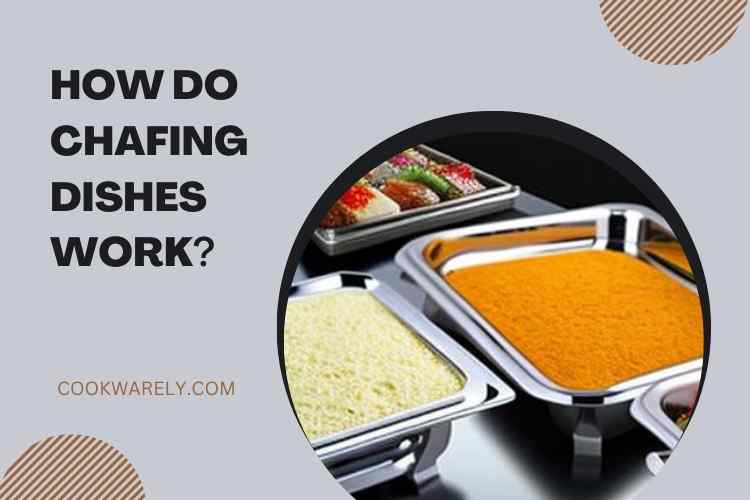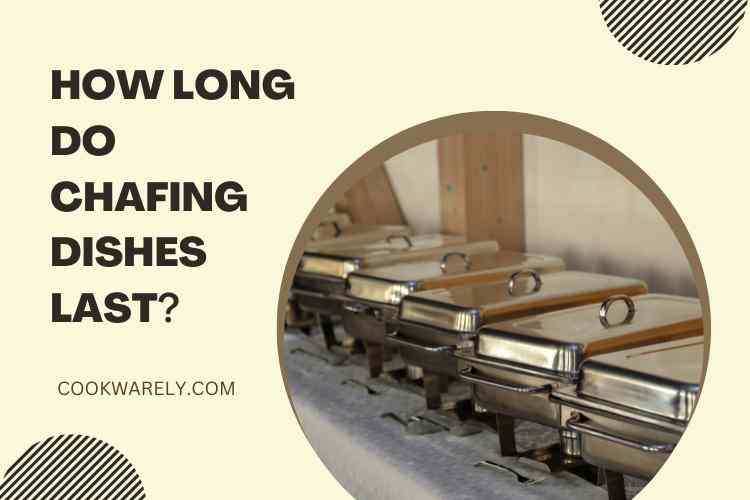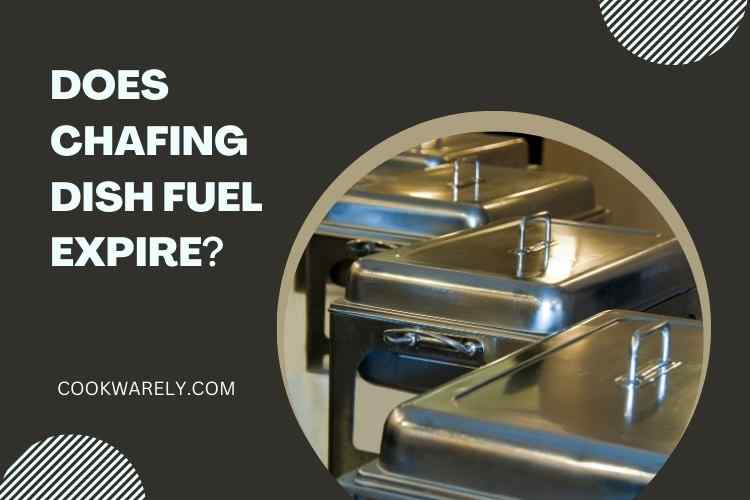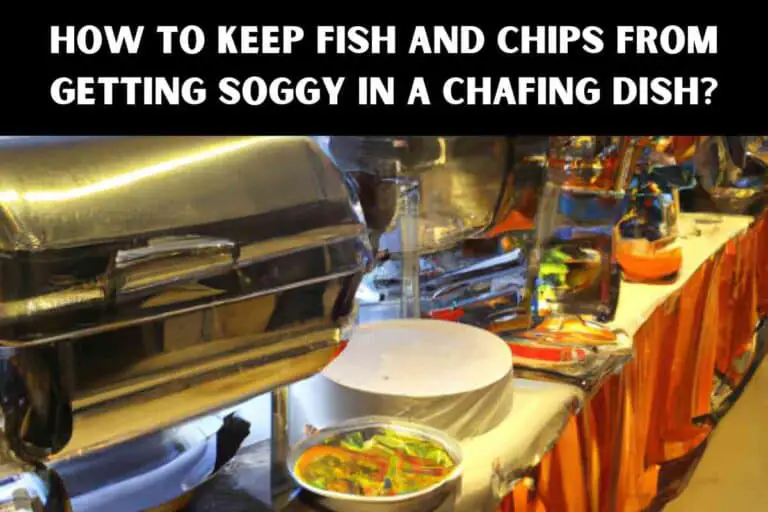How Do Chafing Dishes Work?
Chafing dishes are a convenient and stylish way to keep food warm at parties, events, and other gatherings. But have you ever stopped to wonder how these nifty little devices work?
In this article, we’ll explore the inner workings of chafing dishes and how they keep food at the perfect temperature. Plus, I’ll share some personal experiences using chafing dishes in my entertainment.

What is a chafing dish?
A chafing dish is a type of portable food warmer typically used at buffets, parties, and other events where food needs to be served consistently.
They consist of a metal frame that holds a fuel burner or heating element and a shallow pan or tray for the food. The food is placed in the pan, then covered with a lid to retain heat and moisture.
Chafing dishes come in various sizes and styles, from small individual-sized dishes to large, commercial-grade ones. They can be used to warm a variety of foods, including meats, vegetables, grains, and sauces.
How do chafing dishes work?
Chafing dishes work by using a heating element or fuel burner to heat a shallow pan or tray of food.
The heating element or burner is usually located underneath the pan and is controlled by a thermostat or temperature dial to maintain a consistent temperature.
The pan is typically made of metal, which conducts heat well and helps to distribute the heat to the food evenly. The lid is also made of metal and helps retain heat and moisture, ensuring the food stays warm and moist.
In some cases, chafing dishes may also have a water bath or moist heat source to help keep the food moist. This is especially useful for dishes that dry out when heated, such as meats or casseroles.
Personal experience in using chafing dishes
I’ve had the opportunity to use chafing dishes at several events, and they’ve always been a huge hit. One of my favorite memories of using a chafing dish was at my sister’s wedding reception.
We served a variety of dishes, including chicken, beef, and vegetables, and used chafing dishes to keep everything warm throughout the evening.
The chafing dishes worked like a charm, keeping the food at the perfect temperature and ensuring that everything tasted delicious. We even had some guests returning for seconds and thirds because the food was so good!
Another time I used a chafing dish was at a holiday potluck at my office. I was in charge of bringing a dish to share and decided to make a batch of my famous chili.
I brought the chili to a large chafing dish, which was a hit with my coworkers. The chafing dish kept the chili warm and moist, and everyone raved about its deliciousness.
Benefits of using chafing dishes
Chafing dishes have several benefits to keeping food warm at events and gatherings. Some of the main advantages include the following:
- Convenience: Chafing dishes are portable and easy to set up, making them a convenient choice for events where you need to keep food warm.
- Consistency: Chafing dishes maintain a consistent temperature, ensuring the food stays warm and delicious throughout the event.
- Versatility: Chafing dishes can be used to complete Convenience: Chafing dishes are portable and keep a wide variety of foods warm, including meats, vegetables, grains, and sauces. This makes them a versatile choice for any event.
- Appearance: Chafing dishes are stylish and elegant, making them a great choice for more formal events. They can also add a touch of sophistication to any gathering.
- Efficiency: Chafing dishes are energy efficient, as they only heat the food and not the entire room. This can be especially beneficial for larger events where multiple chafing dishes may be used.
Tips for using chafing dishes
If you’re planning on using chafing dishes at your next event, here are a few tips to keep in mind:
- Preheat the chafing dish: It’s important to preheat the chafing dish before adding the food, as this will help to ensure that the food stays warm throughout the event.
- Use the right fuel: Chafing dishes typically use either a fuel burner or an electric heating element as a heat source. Make sure to use the right fuel for your chafing dish to ensure optimal performance.
- Monitor the temperature: Use a thermometer to ensure the food stays at the recommended temperature. This will help to prevent foodborne illness and ensure that the food tastes its best.
- Refill the fuel as needed: If you’re using a fuel burner, make sure to refill the fuel as needed to keep the chafing dish running smoothly.
- Keep the food covered: Keep the food covered with a lid to retain heat and moisture. This will help to ensure that the food stays warm and delicious.
Conclusion
Chafing dishes are convenient and stylish to keep food warm at events and gatherings.
Using a heating element or fuel burner to heat a shallow pan or tray of food, chafing dishes can maintain a consistent temperature and keep the food warm and moist.
Whether you’re hosting a wedding reception or a holiday potluck, chafing dishes are a great choice for any event.
Just be sure to preheat the chafing dish, use the right fuel, monitor the temperature, refill the fuel as needed, and keep the food covered to ensure the best performance.
FAQs
How Do Chafing Dishes Work?
How Does Chafing Dish Work? Chafing dishes work by using a heat source, such as a sterno can or electric heating element, to maintain a consistent low heat beneath a food pan. The water in the bottom pan is heated, creating steam that keeps the food in the upper pan warm without direct contact with the heat source.
How Does Chafing Fuel Work?
Chafing fuel, such as sterno, works by igniting a gel or liquid fuel source in a canister. This fuel generates a controlled flame that, when placed under the water pan of a chafing dish, heats the water, creating steam to keep the food above at the desired serving temperature.
How Does a Chafing Dish Work?
A chafing dish operates by employing a heat source, such as sterno or electricity, to heat a water pan. The resulting steam from the heated water keeps the food in the upper pan warm without direct heat contact, ideal for serving and catering events.






